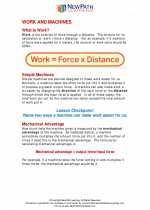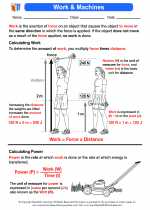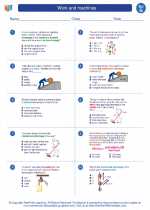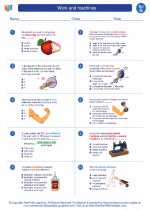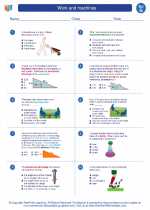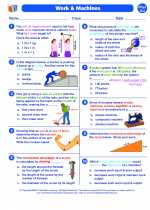Work and Machines
What is Work?
Work is done when a force is used to move an object over a distance in the direction of the force. The formula for work is:
Work (W) = Force (F) x Distance (d) x cos(θ)
Types of Simple Machines
- Lever: A rigid bar that pivots around a fixed point (fulcrum).
- Pulley: A wheel with a groove that a rope or belt can fit into, used to change the direction of a force.
- Wheel and Axle: Consists of a large wheel attached to a smaller shaft, used to transmit force.
- Inclined Plane: A flat surface with one end higher than the other, used to reduce the force needed to lift an object.
- Wedge: A thick end and a thin end, used to split or separate objects.
- Screw: An inclined plane wrapped around a cylinder, used to hold objects together or lift loads.
Mechanical Advantage
Mechanical advantage is a measure of the force amplification achieved by using a tool, mechanical device, or machine system. It is calculated using the formula:
Mechanical Advantage (MA) = Output Force / Input Force
Study Tips
- Understand the concept of work and how it is calculated using the work formula.
- Memorize the different types of simple machines and their functions.
- Practice calculating mechanical advantage for different machines.
- Use diagrams and real-life examples to understand the application of simple machines.
- Review and understand the relationship between force, distance, and work done.
